
Nestled amidst the landscapes of Shoolagiri, Tamil Nadu, in a laidback village, lies Boulder House which is a testament to sustainable living and architectural ingenuity. This site, deep in elephant country, presents a unique canvas for an architectural endeavour that is respectful of its environment. This three-quarter-acre of land is surrounded by boulders and plantations that slope towards a water catchment area. This little sanctuary, Boulder House, by HabitArt Architecture, away from the bustling city of Bangalore is planned over a footprint of 2400 sq. ft., snugly between boulders towards the north and south, opening towards a fruit plantation on the east.
As the story goes, the name ‘Boulder House’ wasn’t just a stroke of architectural branding but a nod to the very essence of its surroundings. It was as if the land itself had a say in the matter, with its majestic boulders and rugged terrain inspiring not just the design but also the moniker. Drawing upon the vernacular architecture, the design meticulously incorporates mud, stone, wood, and clay—materials that have been the cornerstone of construction in this region for generations.
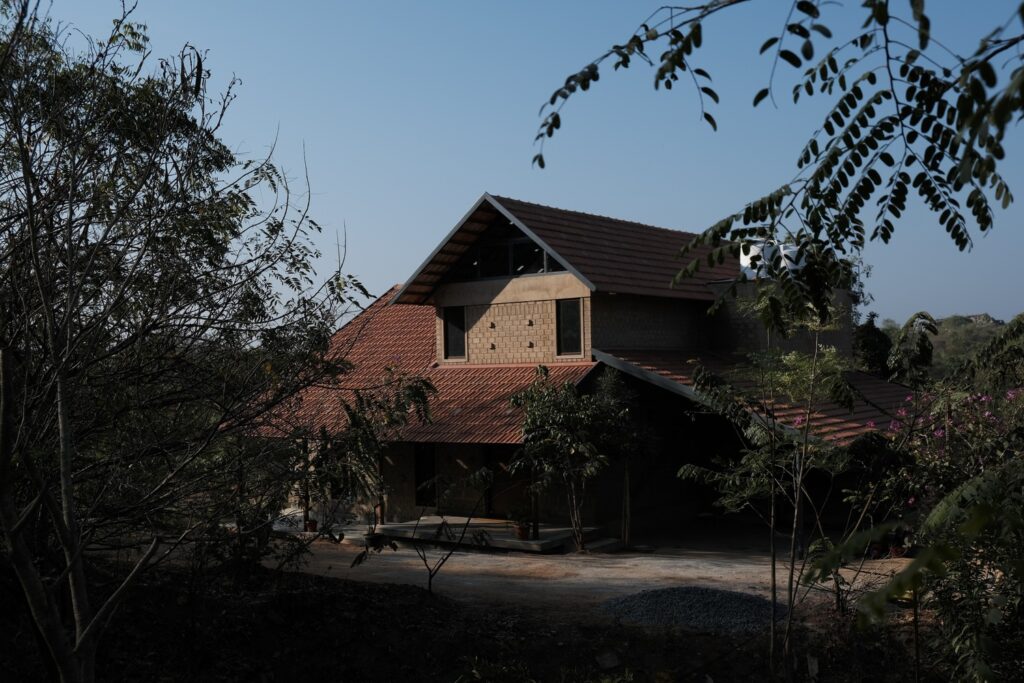

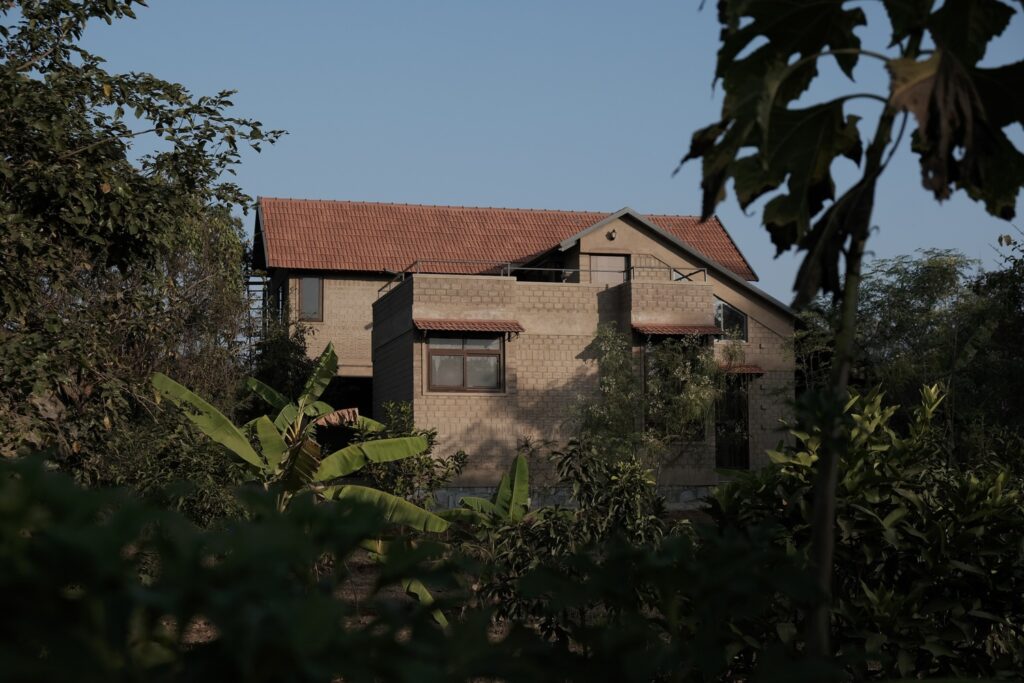
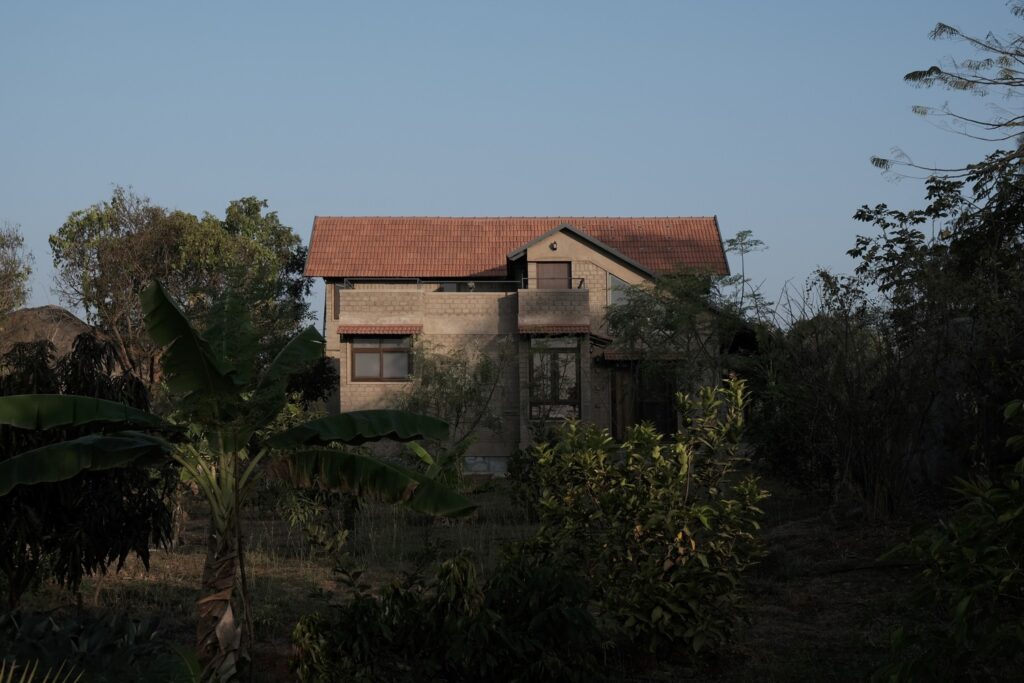
Materiality and Craftsmanship
Stabilised mud blocks, crafted directly on-site, became the foundation of a dwelling designed to offer respite from the extreme heat characteristic of the area. The decision to use local materials was not only an ecological statement but also a practical solution to the challenges posed by the region, contributing to optimising costs and bolstering the local economy. Experienced “karigars and maistries”, a colloquial term for craftsmen, collaborated closely to construct a load-bearing structure that is as much a product of the community as it is of the land. This synergy between local expertise and natural materials underscores a commitment to sustainability that goes beyond the mere aesthetic, embedding the home within the fabric of Shoolagiri’s cultural and environmental landscape.
The foundation of the Boulder House is not just a testament to engineering prowess but also to ecological sensitivity and resourcefulness. Utilising quarry rock and mining waste, abundantly available materials yet often overlooked, the construction team laid the groundwork for a structure that is as stable as it is sustainable. By repurposing quarry rock, mining waste, and buildings from locally available earth, Boulder House minimises its environmental footprint through these implementations.
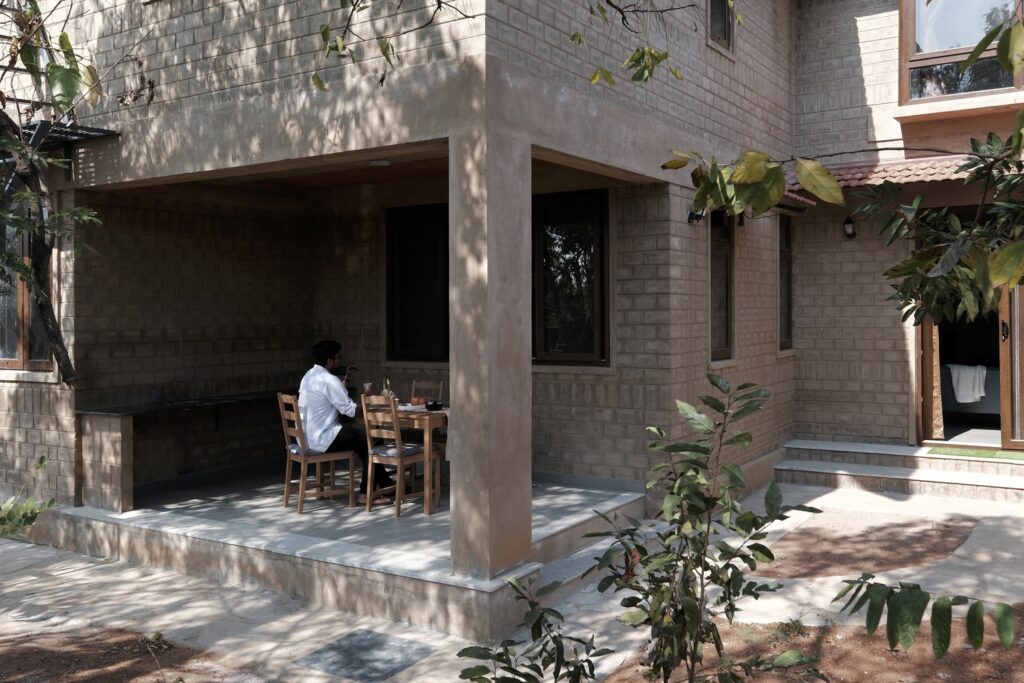

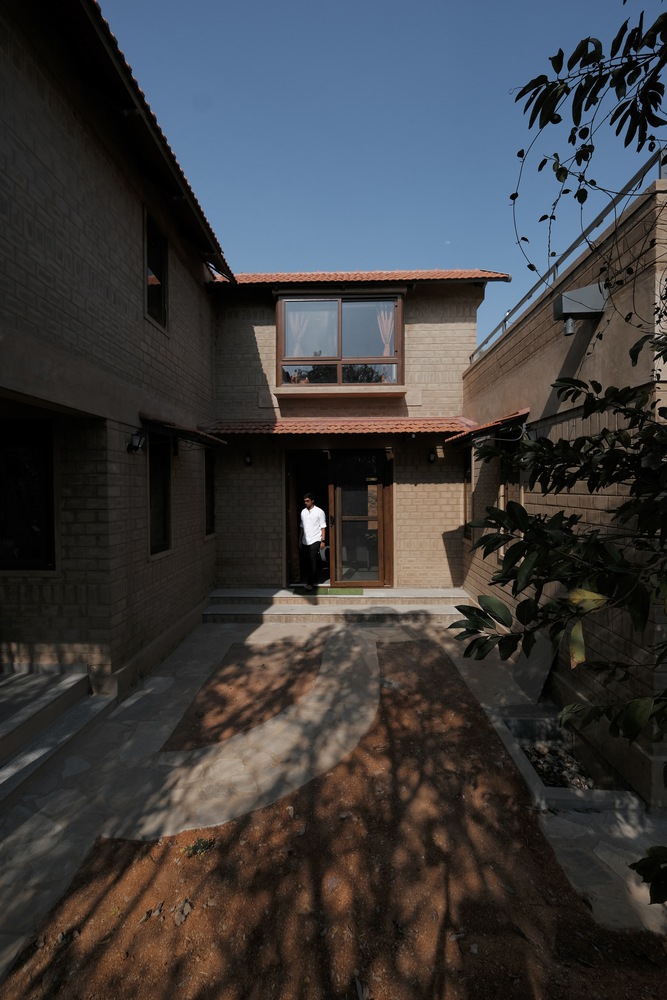
Natural Light and Ventilation
Upon entering the house, visitors are greeted by a double-height volume that immediately introduces the home’s core principle – ventilation. Utilising the principle of the “Stack Effect,” the design ensures that hot air is continually pushed upwards and outwards, maintaining a cool interior without reliance on artificial cooling. This natural ventilation strategy is complemented by an open layout, where each space flows seamlessly into the next, allowing for uninterrupted views across the house.
A thoughtfully designed walkway connects the first-floor bay window area to other parts of the house, enhancing the fluidity of movement and interaction within the space. These bay windows, strategically placed to capture the mesmerising sunset views, further blur the boundaries between inside and out. The presence of a rock outcrop behind the house creates a natural courtyard that spills out from the living. This feature highlights the interplay between the built environment and the landscape and plays a crucial role in reducing heat ingress from the south. This thoughtful integration of natural elements and architectural design underscores the home’s harmonious balance with its environment.


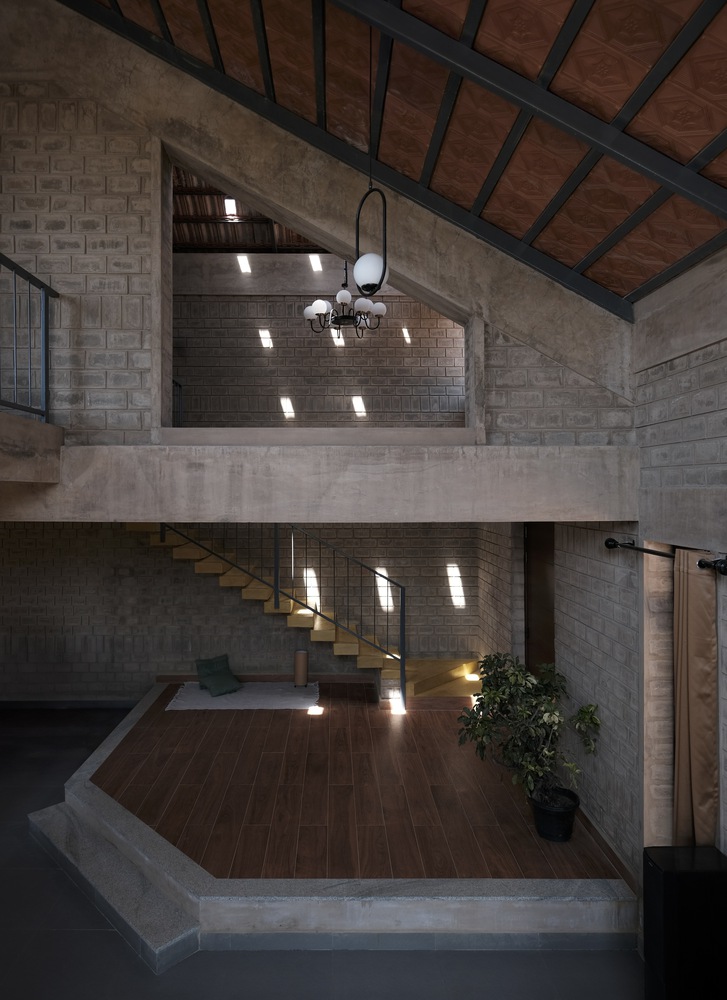
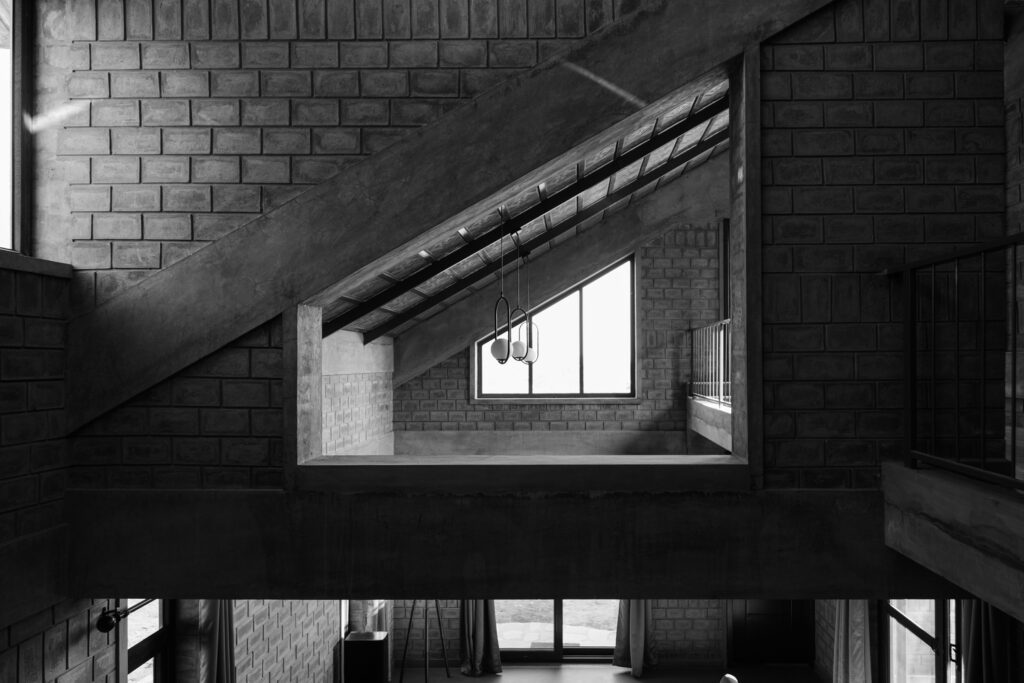

The high-volume pitched roofs feature clay tiles from Mangalore that provide a layer of thermal insulation. Some of these tiles consist of glass inserts that capture specks of sunlight that dynamically change positions during the day. The flat roofs consist of porotherm clay block fillers that greatly reduce the use of concrete, effectively reducing heat penetration into the interior space. The farmhouse is powered by an 8KW solar backup that completely functions off the grid. The excess electricity is sent back into the grid, which is bought back by the local statutory body and keeps the house completely independent of the grid.
Rainwater harvesting is channelled via sloped roofs and gutters placed at various points, draining surface water into rainwater tanks below the ground. This water is used for landscaping and other miscellaneous domestic purposes, including a drip irrigation system for the plantation.
Bio-waste is sent into a bio-digester rather than a local septic tank. The bio-digester system from Re-Leaf works efficiently to segregate sludge waste and water through the implementation of baffle walls. The sludge is broken down into simplified matter through bio-enzymes that periodically need to be fed into the enzyme chamber. This system thus prevents the contamination of groundwater through this process. The Boulder House in Shoolagiri is a celebration of its environment, a showcase of sustainable architecture, and a collaboration between man and nature. In the heart of elephant country, amidst boulders and plantations, it offers a blueprint for the future of sustainable living, where design meets environmental responsibility at every turn.
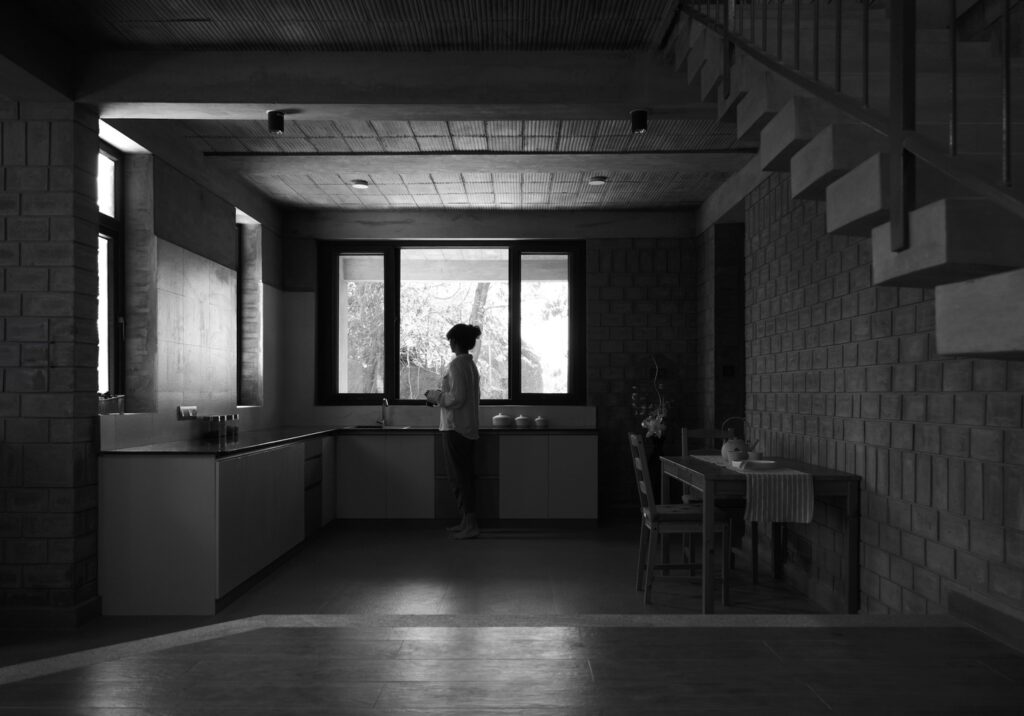
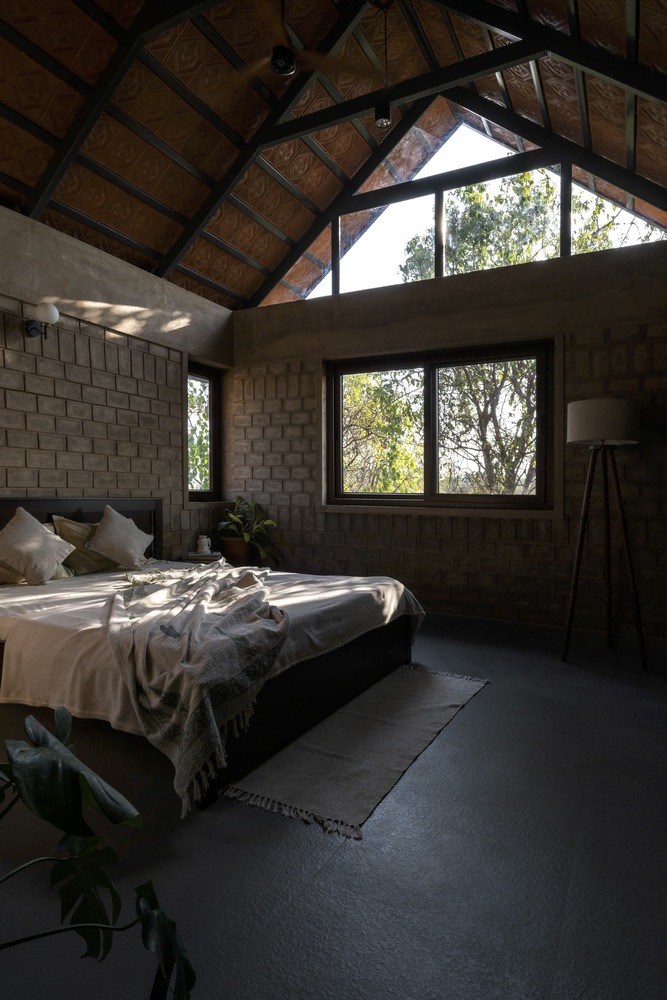
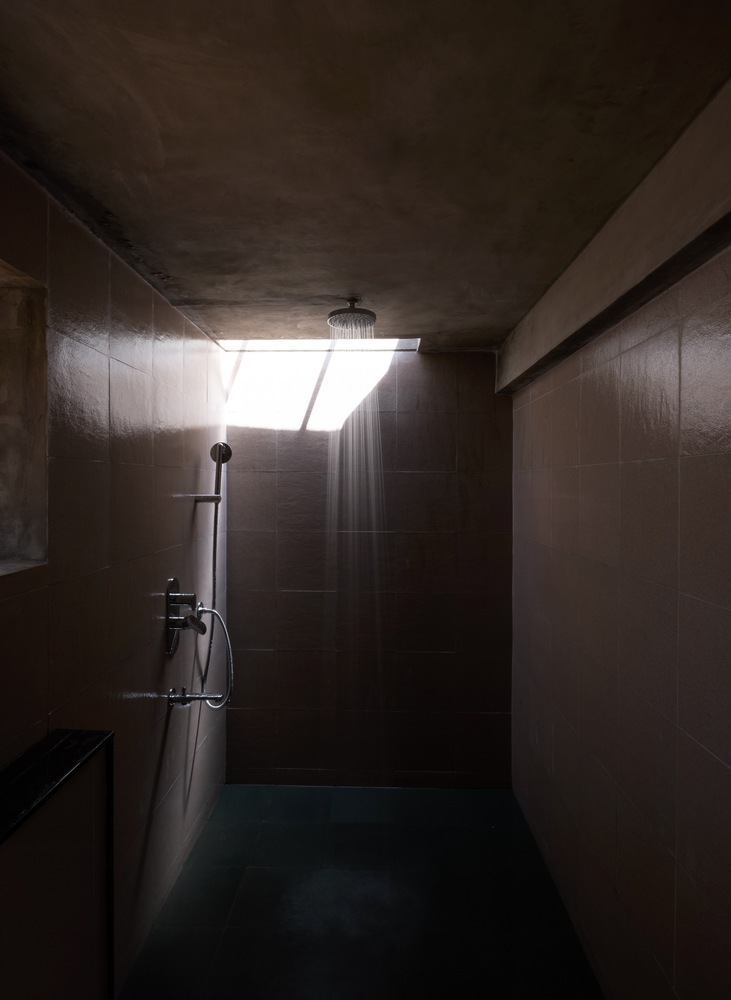
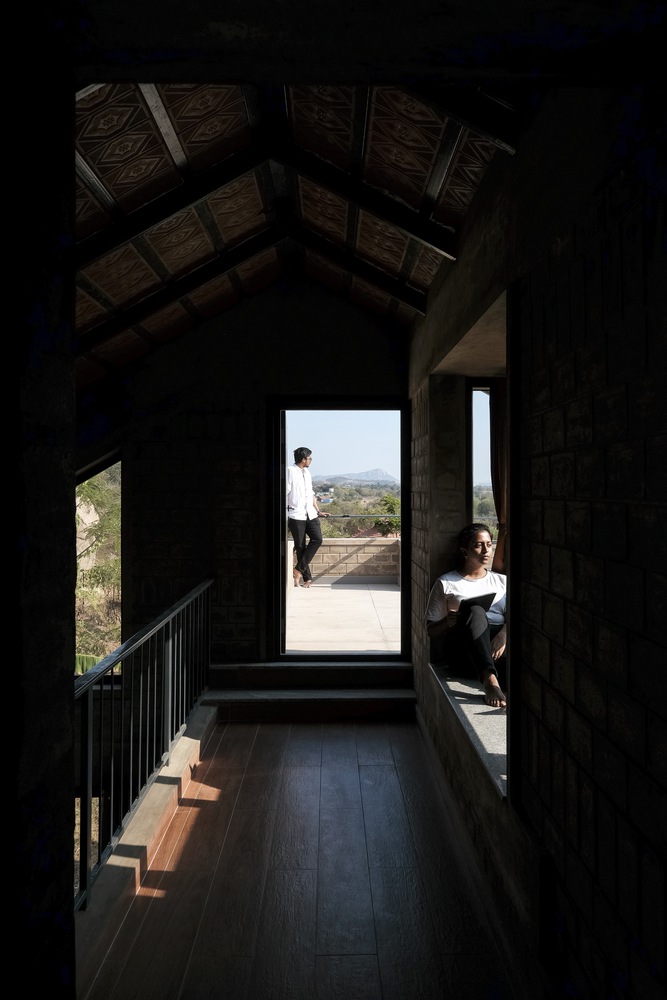
Project Drawings:
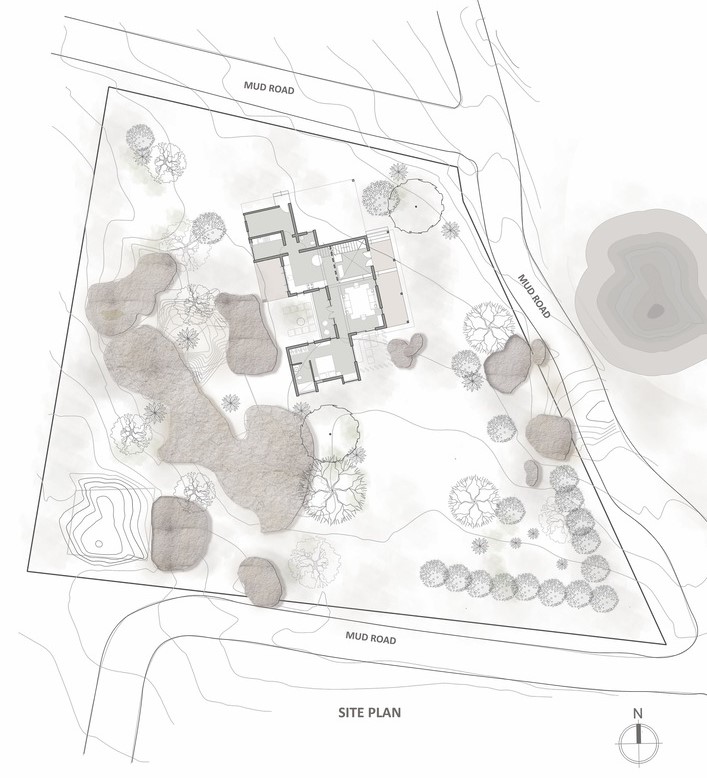

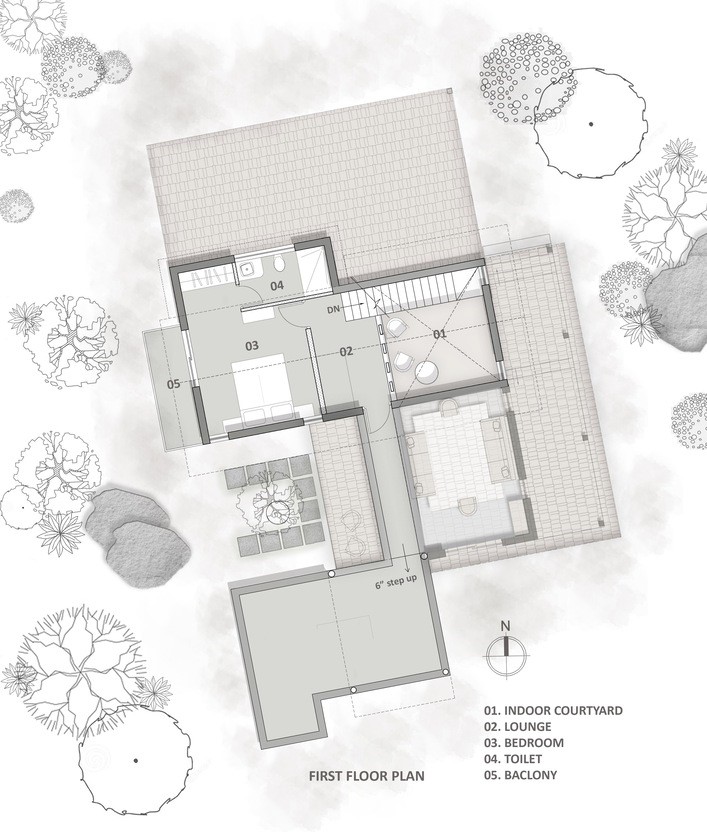
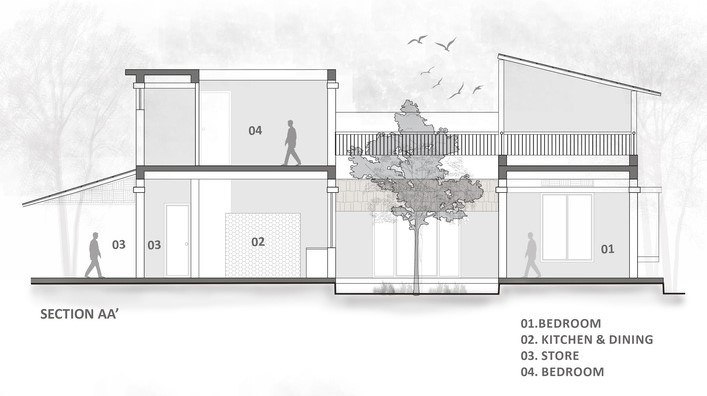
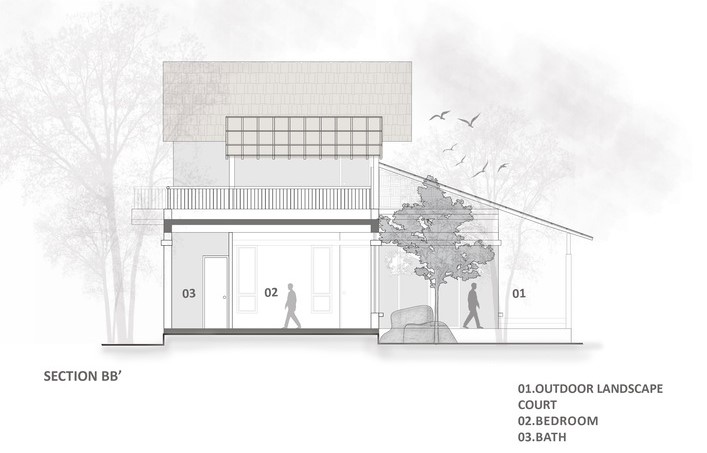
Project Details:
Name: Boulder House
Location: Shoolagiri, Krishnagiri district, Tamil Nadu, India
Status: Completed (2024)
Area: 2400 sq. ft.
Designed by: HabitArt Architecture Studio
Lead Architect: Aditya Venkat
Design, Drawings And Project Management: Rochana R- Associate
Design And Drawings: Yogita K, Divya C
Consultants:
Electrical Consultants: HabitArt Architecture Studio
Landscape Designers: HabitArt Architecture Studio
Design, Drawings And Project Management: Rochana R- Associate
Design And Drawings: Yogita K, Divya C
Project Coordination And Engineering: Reddy Venkataramana
Contractor: D. Swethadri and Co
Electrical: Swethadri
Structural Engineers: Punarvi Infrastructure- Sharath (director)
Text: Archdaily
Photographs: GeoMorph Studio






